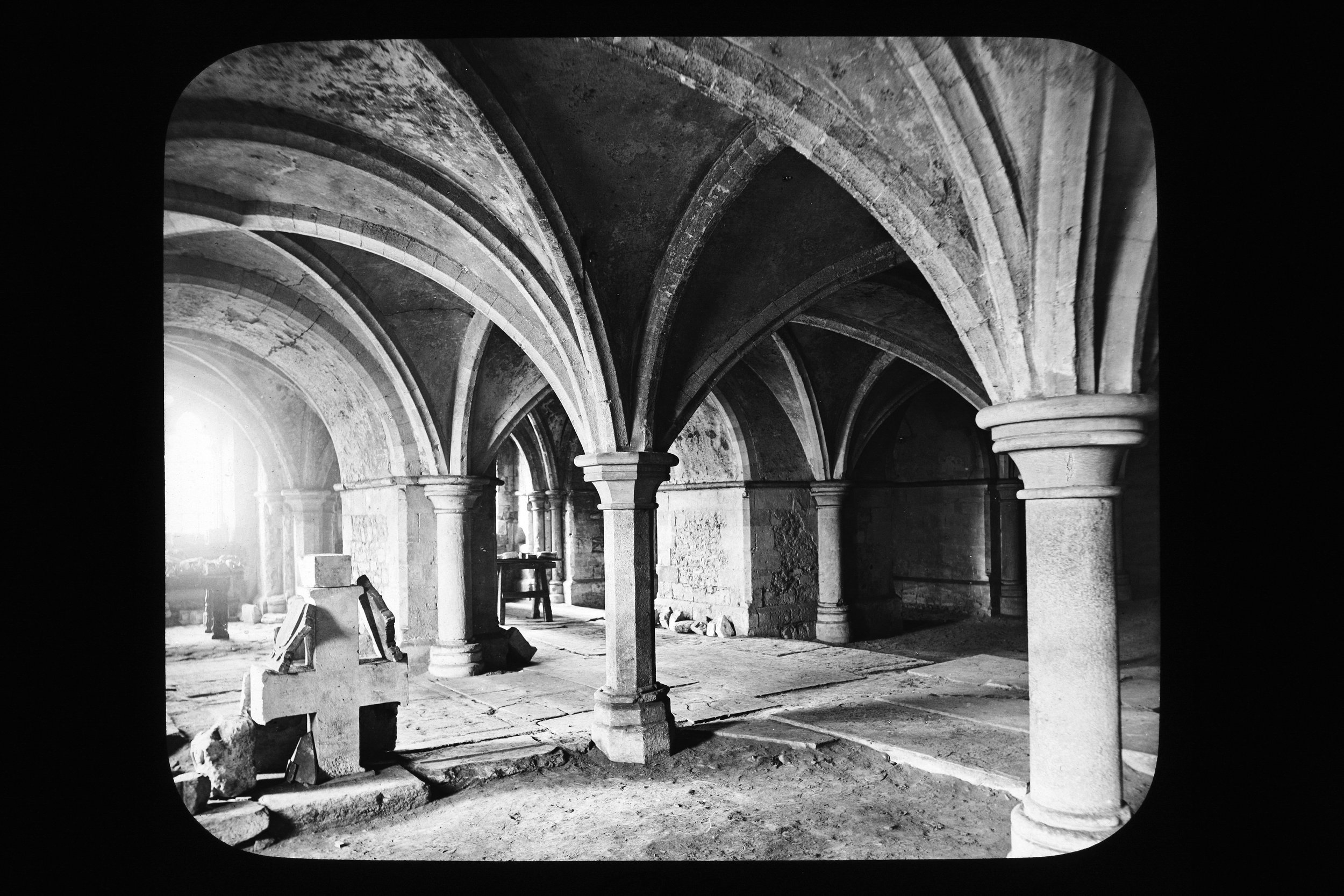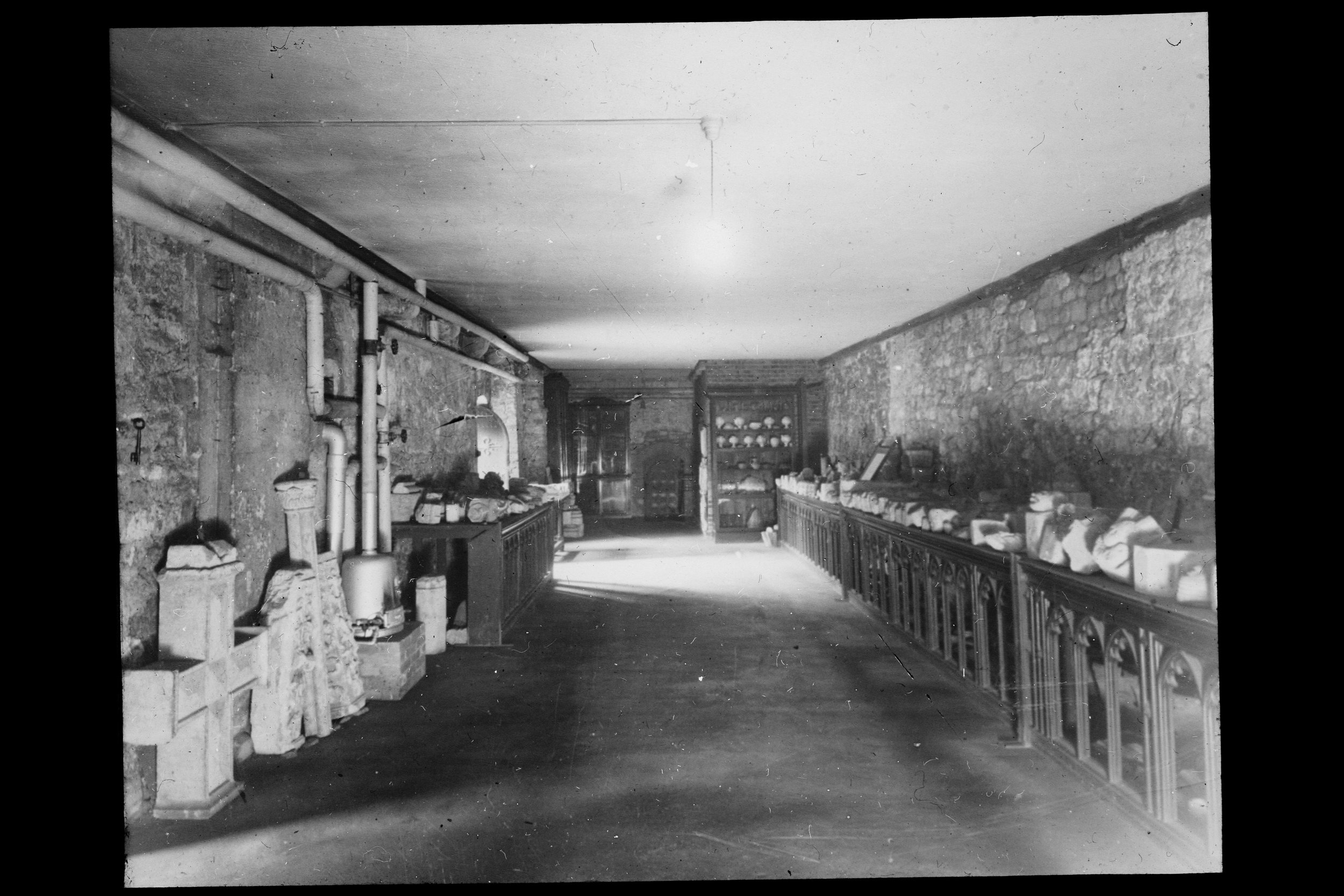Crucifix finial, 19th century
/A well-known drawing of the Cathedral from the High Street in an area that is know occupied by the War Memorial, a large crucifix can be seen at the top of the South Quire Transept.
1783 engraving published by S. Hooper of Gundulf Tower with the remains of a bridge and upper storey before its demolition down to today’s level (Medway Archives DE402/6/3).
The crucifix would have featured prominently in the skyline formed by the Cathedral building.
A large stone crucifix features in the earliest photos of the stone fragment collection, when the fragments were stored loosely at the north end of the Crypt and later in the room below the Chapter Library. Shortly after the stones were gathered into this area they were dispersed into the ruins of the Chapter House, where the crucifix remained until very recently.



Photos of the stone fragment collection featuring the large crucifix fragment.
Due to its enormous heft, it was not possible to move the crucifix to the Lapidarium in the recent gathering of the last historically significant items from the Cathedral Gardens. It has been moved to the store of other oversized stones behind the the Lavatorium gate.
3D model of the crucifix finnial in 2022.
The ferrous reinforcement might have been a repair of the 19th century, perhaps during the works of architect Lewis Nockall Cottingham c.1825. The moulding matches with another prominent feature of the Cathedral Gardens - the gigantic gable stone by the entrance to King’s Orchard.
3D model of the gable stone thought to match with the crucifix finnial.
It may be possible eventually to reuse the two parts of the crucifix, and the other oversized stones it has not been possible to move inside, within a garden landscaping project that could afford them a decent setting, some protection from the elements, and from where they can remain a part of the Cathedral’s story.
Jacob Scott
Heritage Officer






